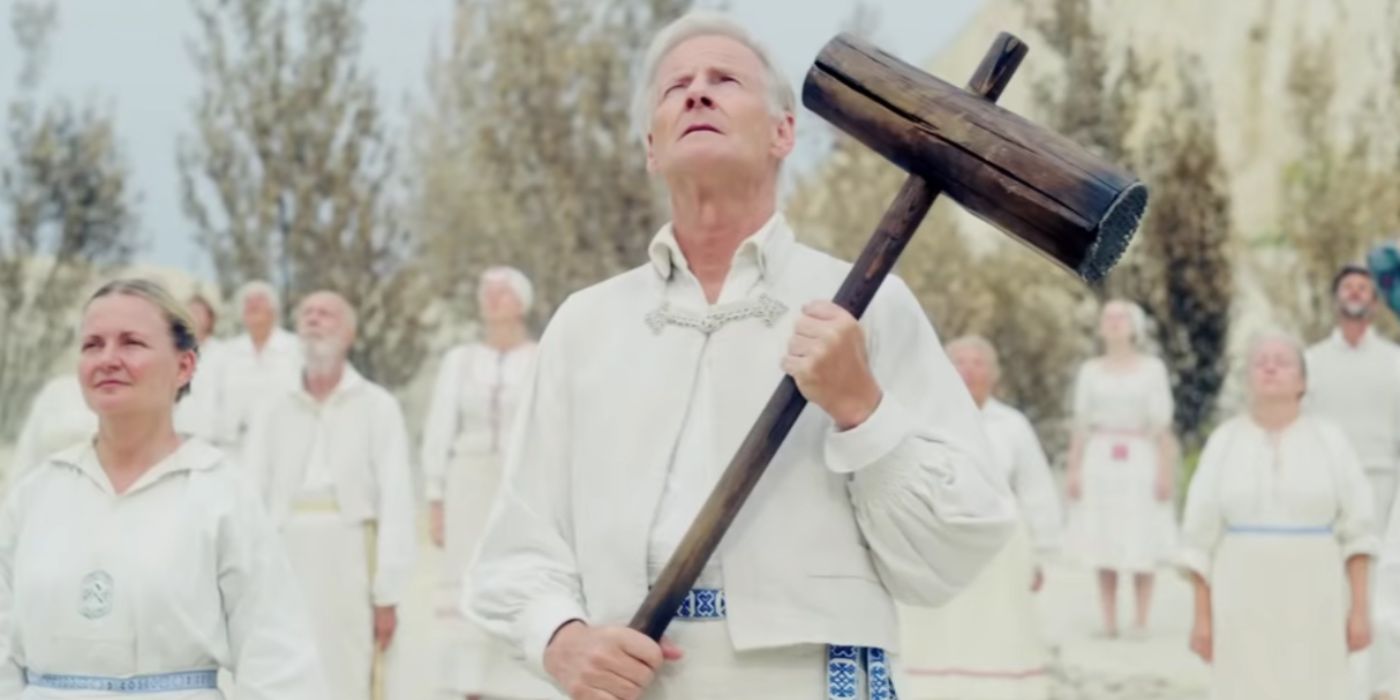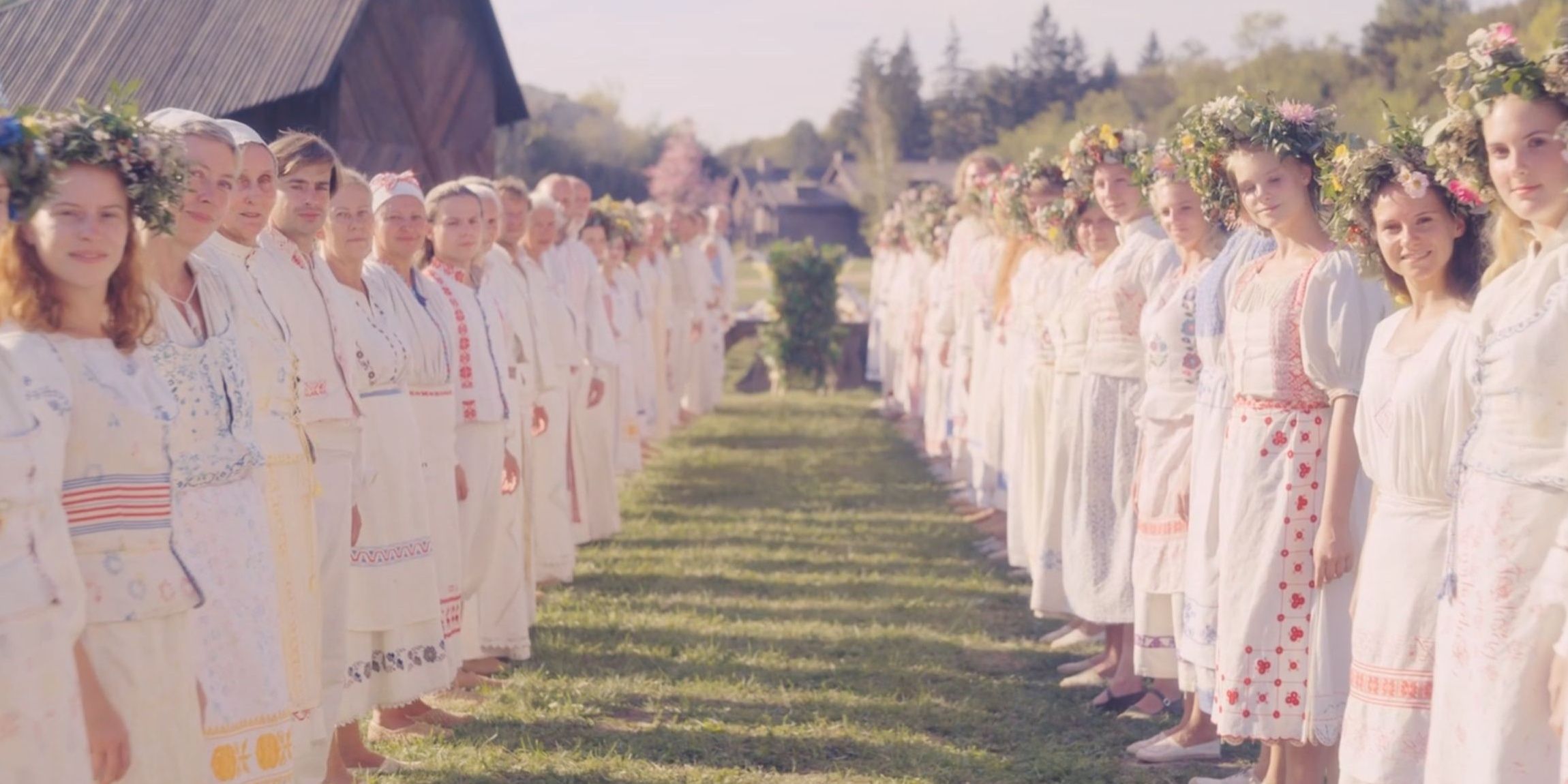Ari Aster's Midsommar is a breathtaking, daytime nightmare steeped in Scandinavian traditions that err on the darker side, and inspired the deadly traditions of his cultists known as the Hårga.
Midsommar was a different kind of horror film, yet brought many of the same symbolism and slow-burn, creeping terror as Aster's first film, Hereditary. Drawing from other folk horror tales like The Wicker Man, Midsommar follows Dani (Florence Pugh) as she tags along with her boyfriend, a cultural anthropologist, and his friends as they accompany their friend back to his village in Sweden to engage in their summer festival traditions and study the Hårga. These types of traditional celebrations have roots in Pagan religious history, and center around the summer solstice.
After ingesting psilocybin mushrooms, a hallucinogenic drug, Dani and her friends start to hallucinate and slowly become integrated into the people in Pelle's commune. While the film is sun-soaked, riddled with stark whites and ethereal imagery, Midsommar makes it clear early on that there's something strange going on with the Hårga, and their traditions aren't limited to elaborate feasts, dancing, and community togetherness. At least, not in the more light-hearted, traditional sense; all of these aspects are explored, but they're twisted in a truly terrifying way.
Midsommar's Hårga Cult & Customs Explained
In order to achieve the desired authenticity for the cultists, Ari Aster worked closely with Henrik Svensson, a set decorator based out of Sweden, who was knowledgeable of traditions and customs. Together, they wrote a lengthy report on the Hårga's traditions and details surrounding their general way of life and their midsummer celebrations. This included everything from the runes scattered throughout the village to their elaborate feasts that are consumed via communal dining, their oracle, Ruben, and even the more violent aspects of their lifestyle. Hårga is actually a town in Sweden, and it has a dark history all its own, beyond just its connection to Midsommar. There's an old Swedish folk song that is sung by people of all ages, even children, that has an underlying thread of menace.
In the song, called Hårgalåtan (The Hårga Song), the devil comes to visit the villagers and, in Pied Piper style, enchants them into dance while he's disguised as a fiddler. Through his enchanted music, he implores all the young people in the village to dance themselves to death. This became the primary inspiration for the May Queen dance contest in Midsommar, which is arguably one of the most iconic parts of the film. The shocking senicide in the film connects to the mythical practice of Ättestupa, which could also be factual, and is known sometimes as Death Cleaning. The concept behind it is the shedding of burden by the elderly, who give their lives willingly so they are no longer a responsibility for their families as they age. It was often done in sacrifice to Odin, the Norse God. In Midsommar, this practice is done at age 72, and the elders pass on their names to the next generation.
The aspect of sexuality is a common theme in Pagan traditions, and the notion of sexual freedom and fertility is practiced throughout all different cultures who have observed Pagan traditions. One particular celebration, Beltane, is known for the observance of The Great Rite. While certainly done through a more horrifying lens in Midsommar, the presence of tradition is known here as well through communion and creation, which the Hårga use to keep their population alive and thriving through these facets of sexual liberation.


